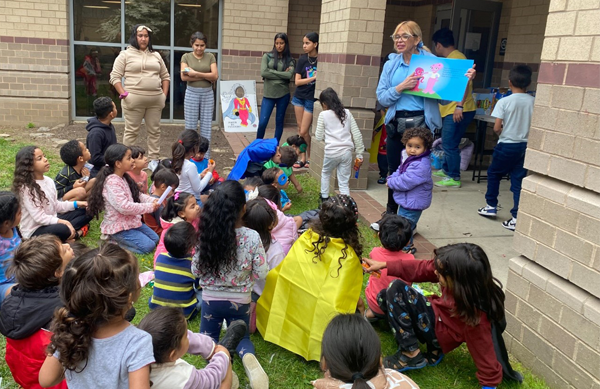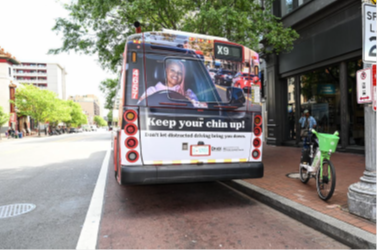The D.C. Highway Safety Office implemented a three-pronged program to address distracted driving in the nation’s capital.
Ward-Specific Campaigns
The first prong implemented neighborhood-specific campaigns for the District’s eight wards to raise awareness about the danger distracted driving poses to people outside the vehicle. To ensure the messaging was authentic and prioritized the humanity of the safety crisis, real District residents were recruited to model for the campaign. They were then photographed in their respective wards, and the advertisements were geotargeted to run in the corresponding communities so that recognizable, real community heroes could serve as safety messengers. The campaign was very successful, with more than 16.5 million total media impressions.
Peer-to-Peer Micromobility Education at Elementary Schools
Secondly, an evidence-based, peer-to-peer micromobility education program for Plummer Elementary School and J.C. Nalle Elementary School students was offered in partnership with Impact Teen Drivers, a nonprofit working to create a distraction-free culture.
Educational and safety materials such as reflective bands, brochures, and “wheels of distraction” were distributed so that families were equipped to make immediate change and could continue these important conversations at home. Impact Teen Drivers also hosted a “train the trainer” session with approximately 20 Metropolitan Police Department community engagement officers in attendance.
Automated Traffic Enforcement
For the third prong, the D.C. HSO explored the feasibility of expanding the District’s automated traffic enforcement program to include equipment that detects distracted drivers in partnership with Kittleson and Associates as a non-biased third party.
Two high-risk areas on the District’s High Injury Network – Georgia Ave NW and Benning Road NE – were identified as pilot locations for installing the responsive driver feedback signs. Within the first week of deployment, these devices detected phone usage rates of nearly one-third at Georgia Avenue (32.8%) and Benning Road (32.5%). Several months later, those rates had fallen to 6.3% and 5.4%, respectively. This illustrates the clear and positive behavior change that can happen when a driver is faced with real-time feedback.






